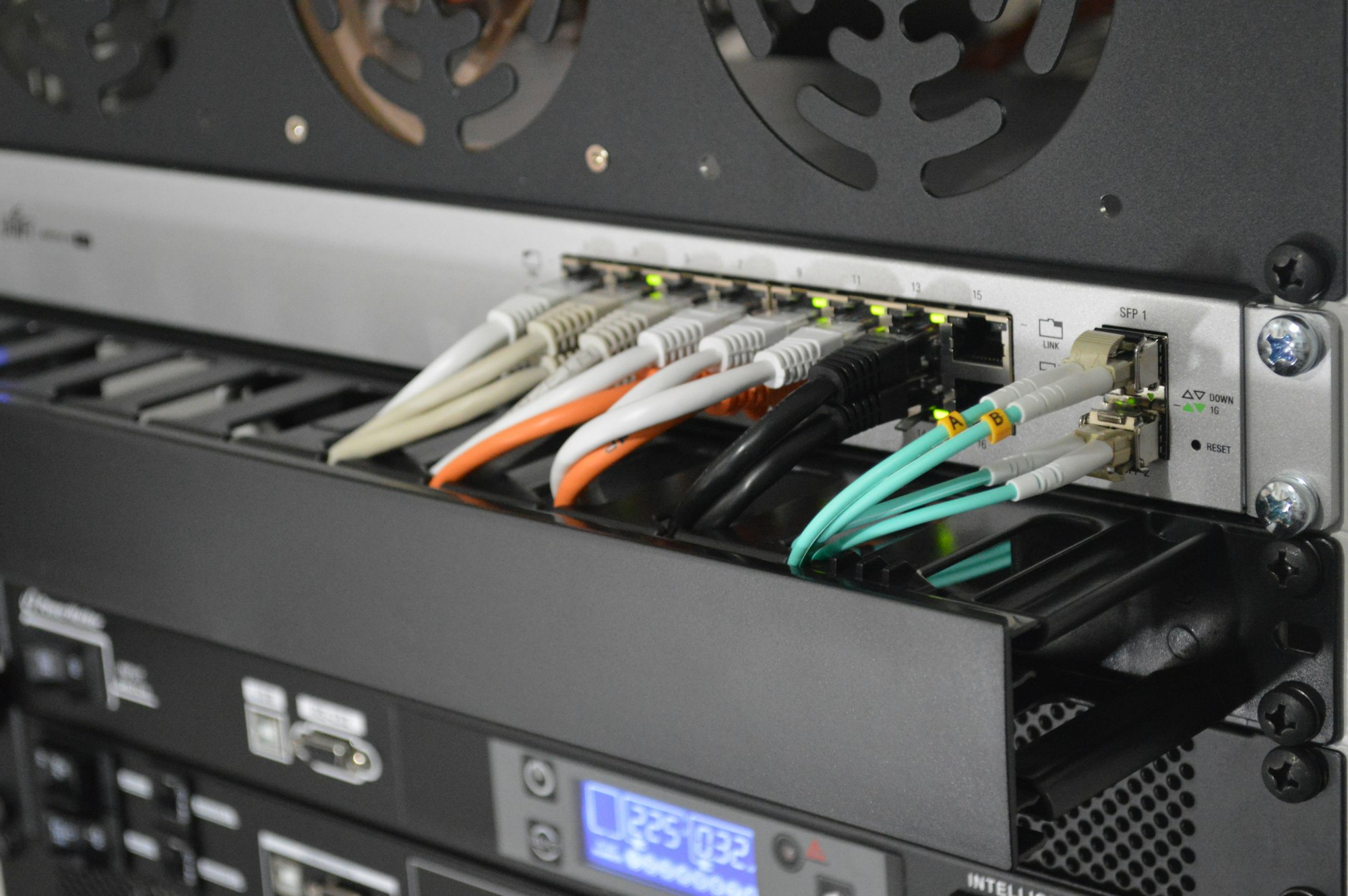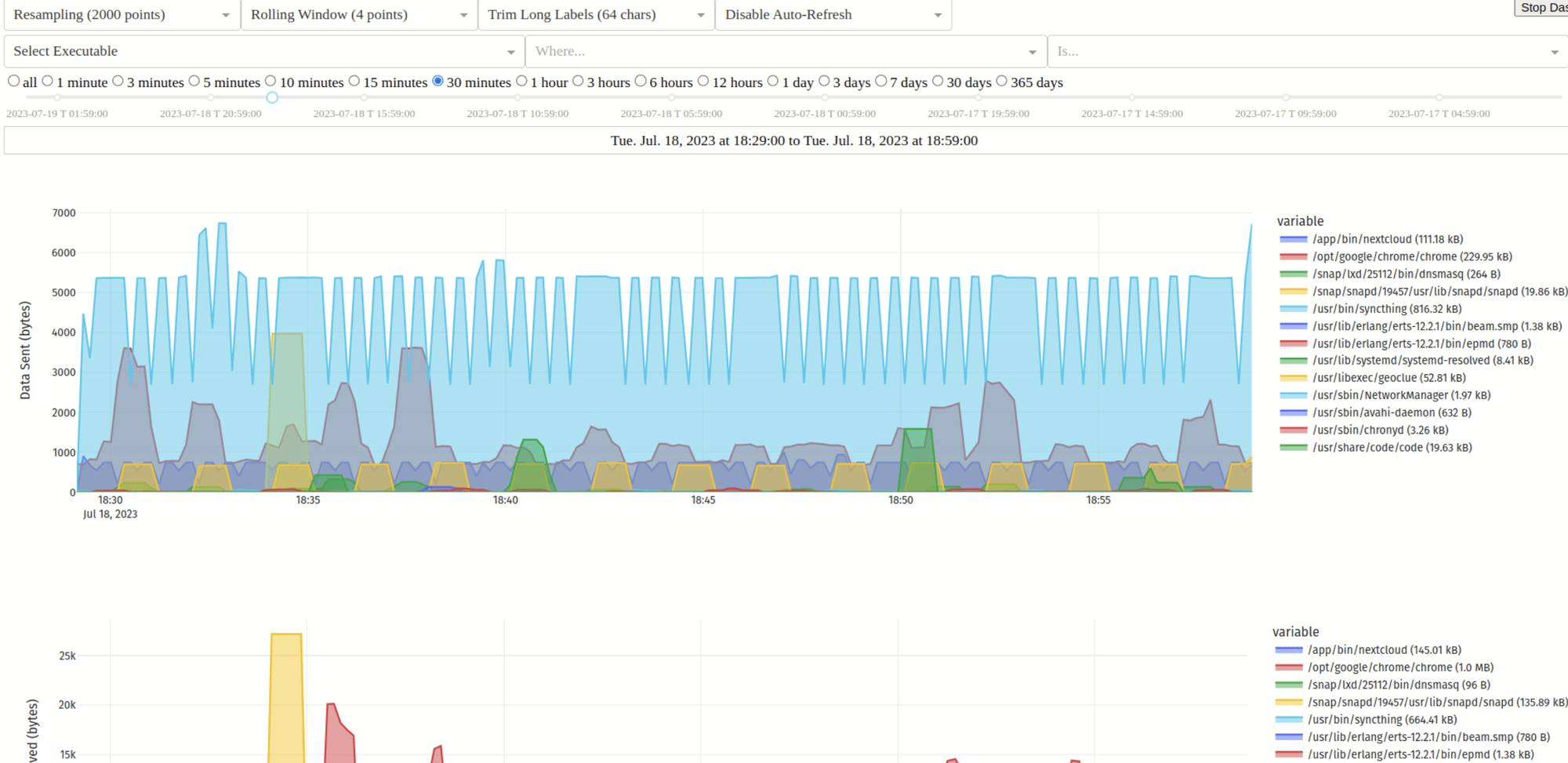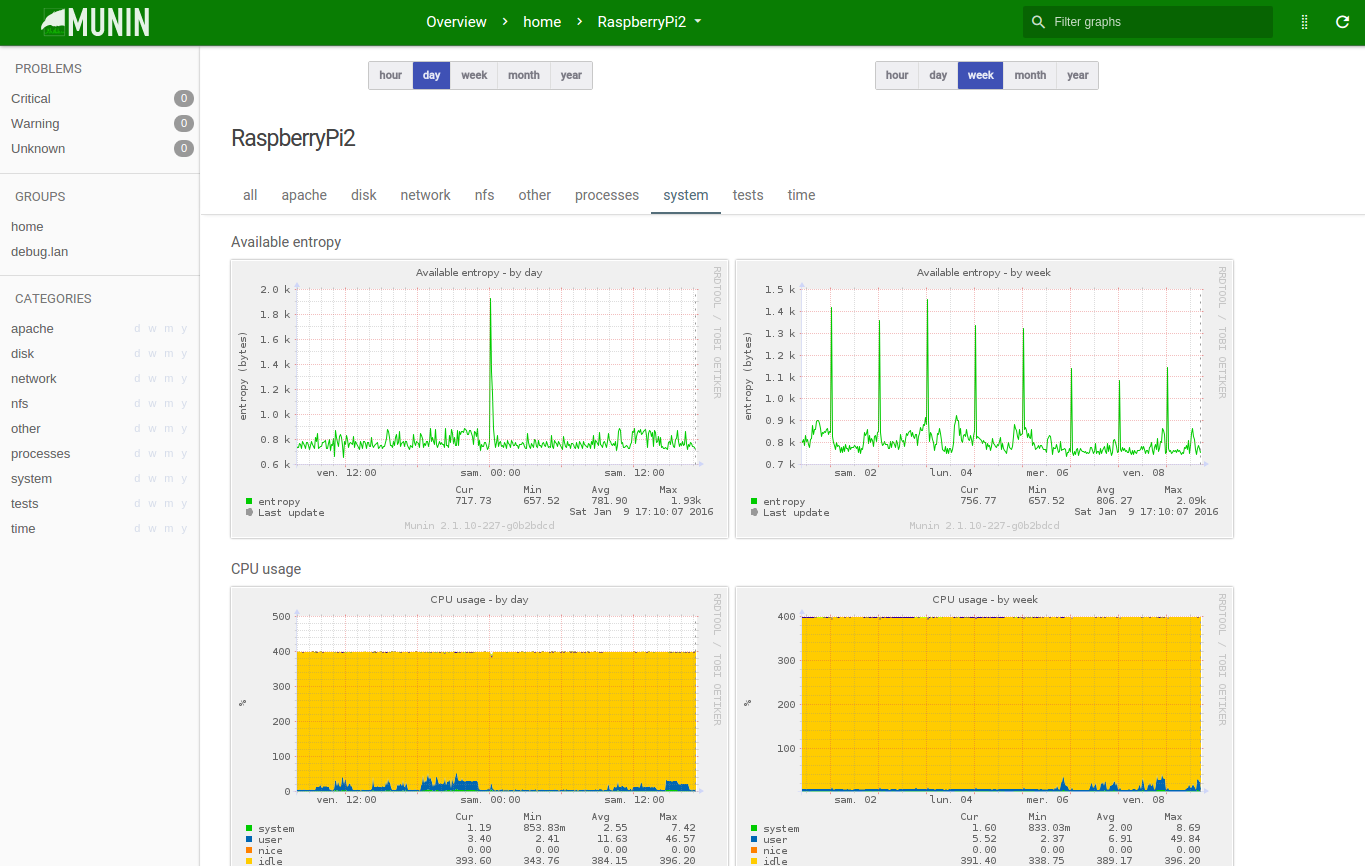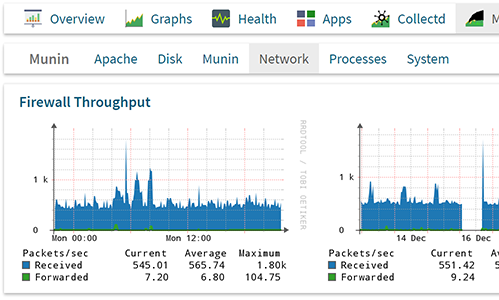13 Open-source Free Professional Network Management and Monitoring Apps for Enterprises
Table of Content
A Network Management and Monitoring System is a set of tools and processes designed to oversee, control, and optimize network resources and services. It helps administrators monitor network performance, detect issues, and manage network resources effectively.
This tool is essential for organizations looking to enhance performance, security, and efficiency in an increasingly complex digital landscape. Implementing such a system can result in significant long-term benefits, including improved service delivery, cost savings, and strategic insights.
Why Your Firm May Need One
- Growing Network Complexity: As businesses expand, networks often become more complex. A NMMS helps manage this complexity efficiently.
- Increased Reliance on Technology: With businesses increasingly dependent on technology, a reliable network management system ensures continuous operations.
- Need for Enhanced Security: As cyber threats become more sophisticated, an NMMS provides the tools necessary to safeguard against potential risks.
- Focus on Core Business Functions: By outsourcing network monitoring and management tasks, your IT team can concentrate on strategic initiatives that drive business growth.
- Meeting Compliance Requirements: Industries with strict regulatory requirements can benefit from the oversight and reporting capabilities of NMMS to ensure compliance.

Benefits of Using am Open-source Network Management and Monitoring System
1- Enhanced Network Performance:
Continuous monitoring allows for the identification of performance bottlenecks and areas that require optimization, ensuring smooth and efficient network operations.
2- Proactive Issue Detection:
Real-time alerts and notifications enable IT teams to detect and address potential problems before they escalate into significant outages or downtime.
3- Improved Security:
NMMS can monitor for suspicious activity, unauthorized access, and other security threats, helping to safeguard sensitive data and prevent breaches.
4- Increased Efficiency:
Automating network management tasks reduces the time and effort required by IT staff, allowing them to focus on strategic initiatives rather than day-to-day operations.
5- Resource Management:
Provides insights into resource utilization, helping organizations allocate bandwidth and other resources effectively to meet business needs.
6- Data-Driven Decision Making:
Detailed reporting and analytics help IT teams make informed decisions about upgrades, changes, and resource allocations based on actual network performance data.
7- Enhanced Compliance:
Helps organizations maintain compliance with industry regulations by ensuring that network security protocols and practices are in place and monitored.
8- Scalability:
As organizations grow, NMMS can scale to accommodate increased network complexity, allowing for the seamless addition of new devices and services.
9- Cost Savings:
By preventing downtime, optimizing resource usage, and improving operational efficiency, NMMS can lead to significant cost savings over time.
10- Improved User Experience:
By ensuring network reliability and performance, NMMS enhances the overall experience for users, whether they are employees, clients, or customers.

In the following compiled list, we collected the best open-source network monitoring and management tools that you can download, install, test and use for free.
1- Nagios
Nagios is an open-source monitoring tool that helps organizations keep track of their IT infrastructure. It checks the status of servers, applications, and network devices, alerting users to any issues or failures.
With Nagios, users can ensure their systems are running smoothly, identify problems quickly, and maintain high availability for their services. The platform is highly customizable and supports various plugins to extend its functionality.
2- OpenWISP
OpenWISP is an open-source platform designed for managing and monitoring wireless networks and Internet of Things (IoT) devices. It provides a range of tools and services, including configuration management, monitoring, and a customizable dashboard for network administrators.
OpenWISP is built on a modular architecture, allowing users to integrate various components according to their needs.
The platform supports multiple use cases, from managing public Wi-Fi networks to IoT device management, making it suitable for both small and large-scale deployments. Its community-driven approach ensures continuous improvement and support.
3- OpenNMS
OpenNMS is an open-source network management platform designed to monitor and manage large-scale networks. It offers features like automatic network discovery, performance monitoring, event management, and alerting. OpenNMS helps organizations keep track of their network health and performance in real-time, making it easier to identify and resolve issues.
With a user-friendly interface and powerful capabilities, it is suitable for businesses of all sizes looking to enhance their network operations.
4- PacketFence
PacketFence is a free, open-source network access control (NAC) solution designed to secure networks of all sizes, from small to large heterogeneous environments. It offers a wide range of features, including a captive portal for user registration and remediation, centralized management for wired, wireless, and VPN connections, BYOD (Bring Your Own Device) support, 802.1X authentication, role-based access control (RBAC), and network anomaly detection.
With over 5,000 deployments globally and the ability to handle millions of endpoints, PacketFence efficiently manages guest access, enhances security, and simplifies network administration.
5- Nmstate
Nmstate is a library and command-line tool designed for managing host network settings in a declarative way.
It allows users to define the desired networking state using a pre-defined schema, with the ability to report both the current and desired states in a standardized format.
Aimed at enterprise environments, Nmstate offers a northbound declarative API for managing networks and supports multiple providers, though NetworkManager is currently the primary supported provider.
6- LibreNMS
LibreNMS is a comprehensive, open-source network monitoring system with a wide range of features and extensive device support. It offers automatic network discovery through various protocols like SNMP, CDP, OSPF, and more.
The system includes customizable alerting with notifications via email, IRC, and Slack, alongside API access for managing and retrieving data.
Additional features include a billing system for bandwidth usage, automatic updates, distributed polling for scalability, and native mobile apps for iPhone and Android. It also supports various integrations (e.g., NfSen, collectd) and multiple authentication methods like LDAP, Radius, and Active Directory.
7- NMaaS (Network Monitoring as a Service)
The NMaaS (Network Monitoring as a Service) is an open-source platform that allows for the deployment and management of containerized applications across a pool of physical machines.
It integrates several open-source tools, including Kubernetes, Docker, Grafana, Prometheus, and Rancher, to provide comprehensive network monitoring. NMaaS is deployed and installed automatically using Ansible, making it easy to manage and scale.
8- ntopng®
ntopng® is a web-based application for monitoring network traffic, released under GPLv3. It is the modern version of the original ntop, first developed in 1998, now enhanced with improved performance, user-friendliness, and a wide range of new features.
9- SimpleMonitor
SimpleMonitor is a simple Python script which monitors hosts and network connectivity.
It is designed to be quick and easy to set up and lacks complex features that can make things like Nagios, OpenNMS and Zenoss overkill for a small business or home network. Remote monitor instances can send their results back to a central location.
10- Zeek
Zeek, originally named "Bro," is a powerful open-source network security monitoring tool developed by Vern Paxson in the 1990s.
Renamed in 2018, Zeek offers deep insights into network activity without acting as an active defense system. It operates passively on hardware, virtual, or cloud-based sensors, capturing detailed network traffic logs and customizable data outputs, which can be integrated with SIEM systems for security analysis.
Zeek is highly trusted in the cybersecurity community, with over 10,000 deployments worldwide and decades of federal research and development backing its evolution.
11- Munin

Munin is a networked resource monitoring app that can help analyze resource trends and "what just happened to kill our performance?" problems. It is designed to be very plug and play. A default installation provides a lot of graphs with almost no work.
Features
- Easy to Install: Install and configure Munin in under 10 minutes by following simple instructions.
- Real-Time Alerts: Munin polls servers every 5 minutes, ensuring timely alerts for potential issues.
- Scalable: Supports monitoring from small setups like Raspberry Pi to large clusters with 100+ nodes.
- Flexible: Automatically selects from 500+ available plugins to monitor services on your servers.
- Extensible: Create custom plugins in any language to monitor specific services or metrics.
12- Cacti
Cacti is a powerful and flexible operational monitoring and fault management tool that also serves as a comprehensive network graphing solution using RRDTool. It features a fault-tolerant, distributed data collection framework, advanced automation templates, and multiple data acquisition methods.
Cacti supports plugins, role-based user management, theming, and multi-language support. Its intuitive interface suits networks of all sizes, from small LANs to large installations with tens of thousands of devices.
Cacti is open-source under the GNU General Public License, with active community forums offering support and insights from thousands of users.
Features
- Network Graphing Solution: Harnesses RRDTool's data storage and graphing capabilities for comprehensive network monitoring.
- Distributed and Fault-Tolerant: Robust data collection framework that supports distributed, fault-tolerant environments.
- Advanced Automation: Template-based automation for devices, graphs, and trees, simplifying configuration.
- Extensible via Plugins: Easily extendable through a variety of plugins to customize functionality.
- Role-Based Access Control: User, group, and domain management features with role-based permissions.
- Multi-Language Support: Includes theming engine and support for multiple languages out of the box.
- Intuitive Interface: User-friendly interface suitable for both small LANs and complex, large-scale networks.
13- Observium

Observium is a network monitoring and management platform offering real-time insights into network health and performance. It automatically discovers devices and services, collects metrics, and generates alerts for issues. Featuring an intuitive web interface, it provides real-time and historical data for quick issue resolution.
Observium supports diverse device types and platforms, including Cisco, Windows, Linux, Juniper, and more. Developed by experienced network engineers, it’s designed for ease of use and maintenance, ensuring administrators can efficiently manage and monitor networks.












